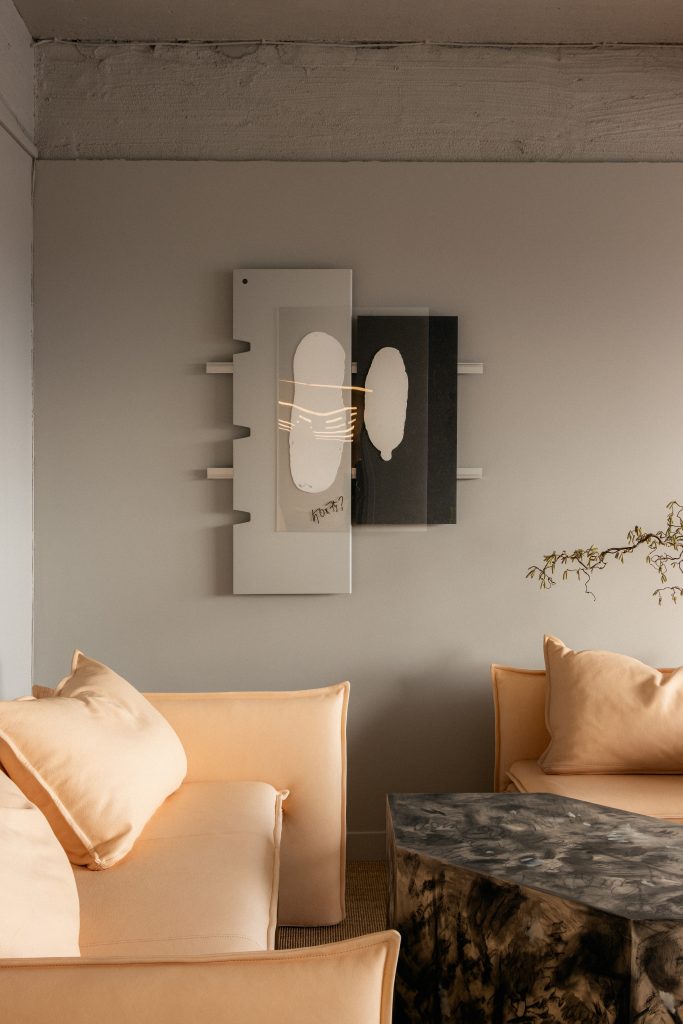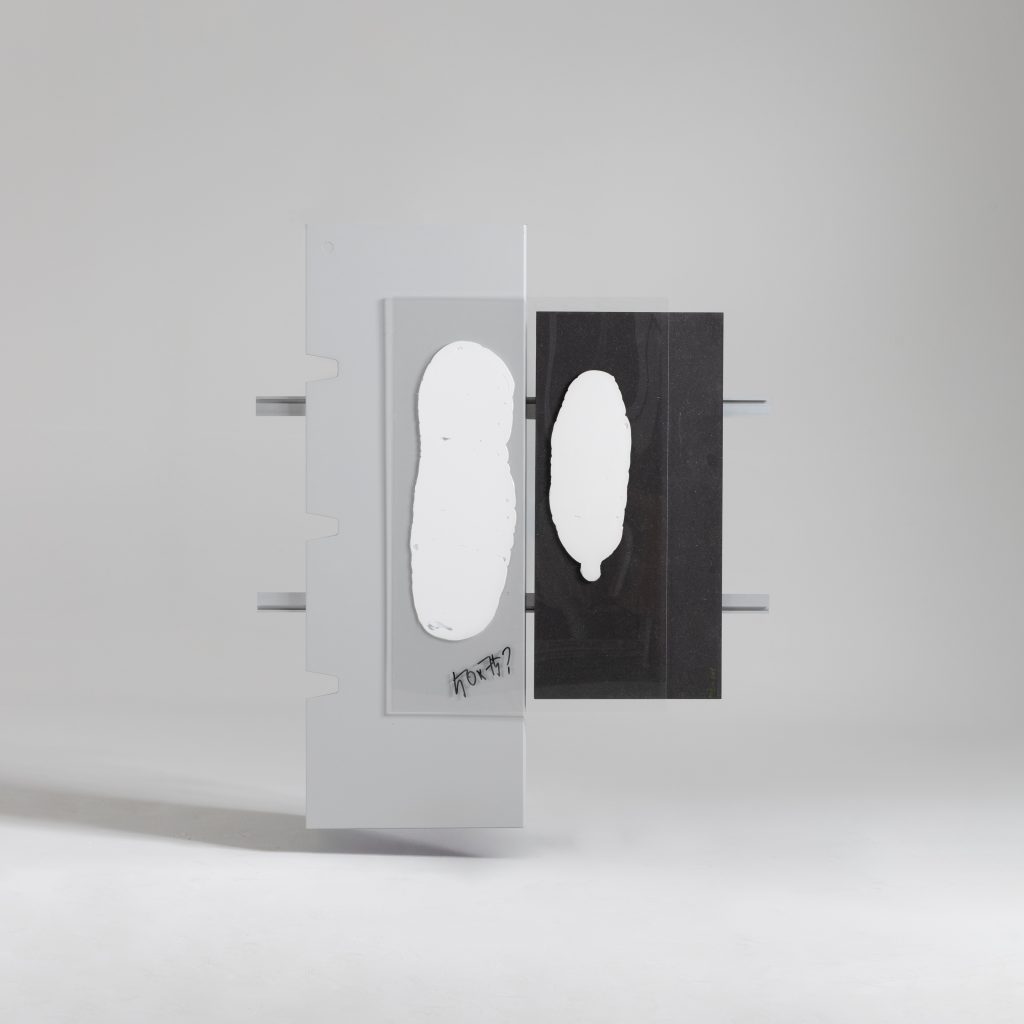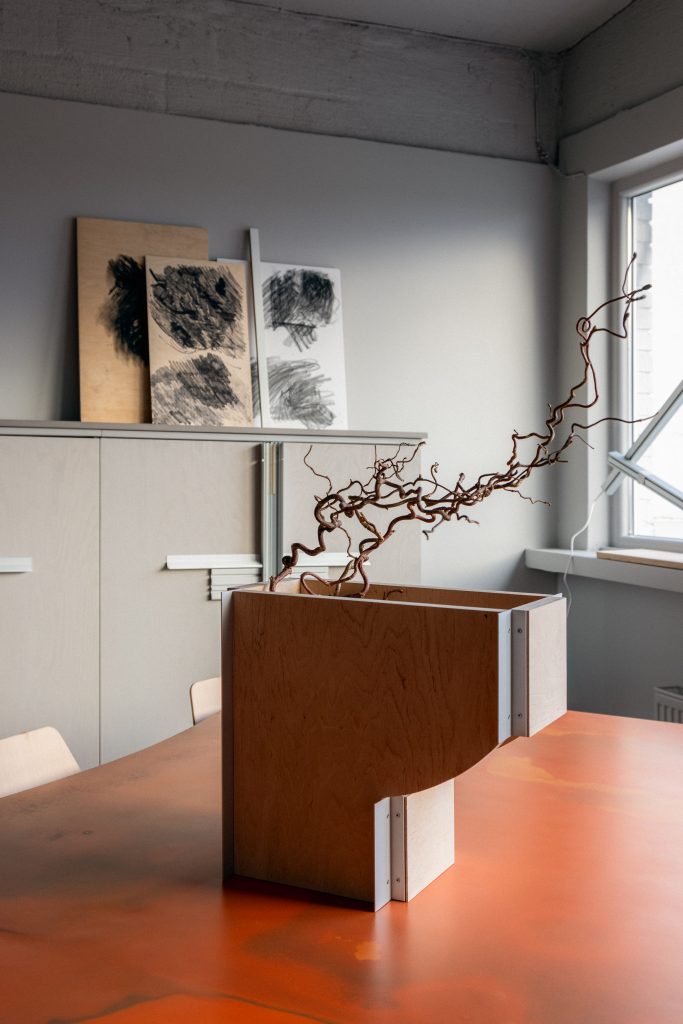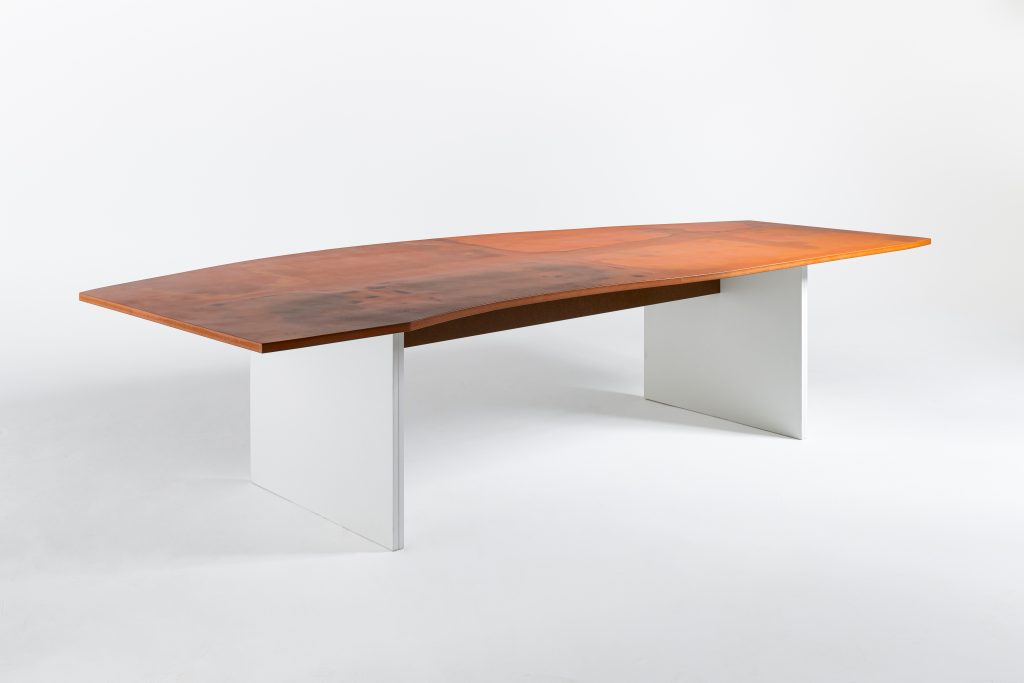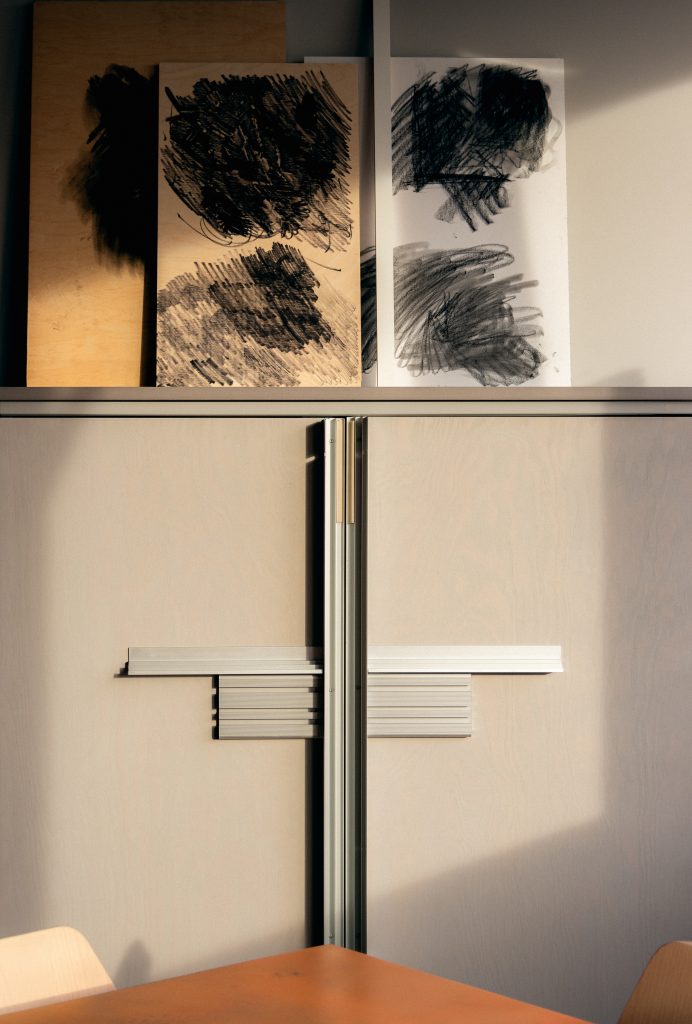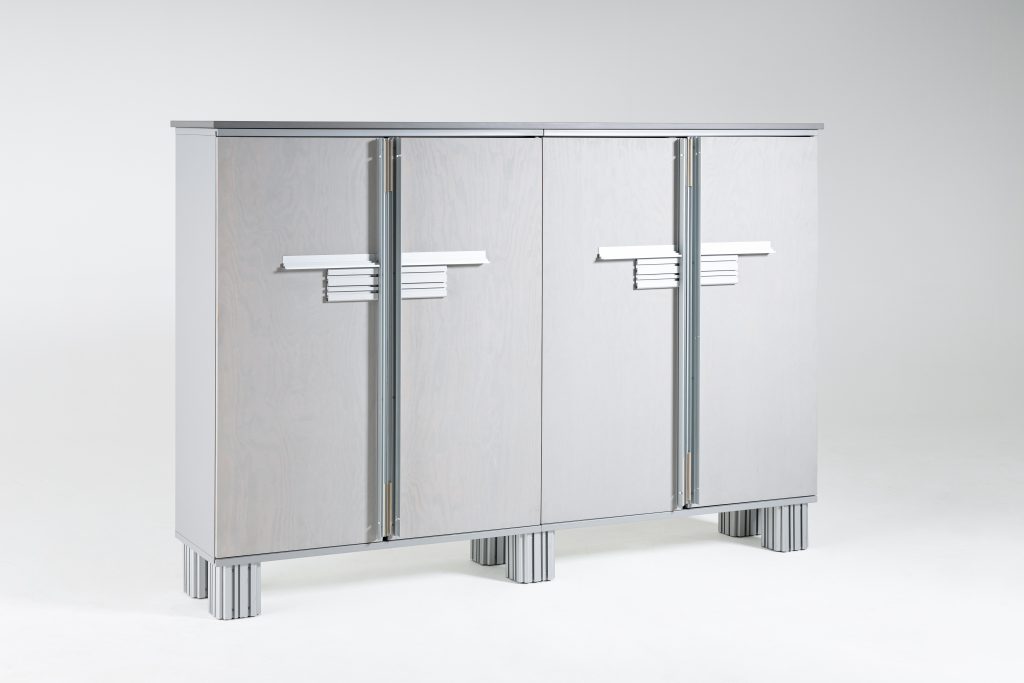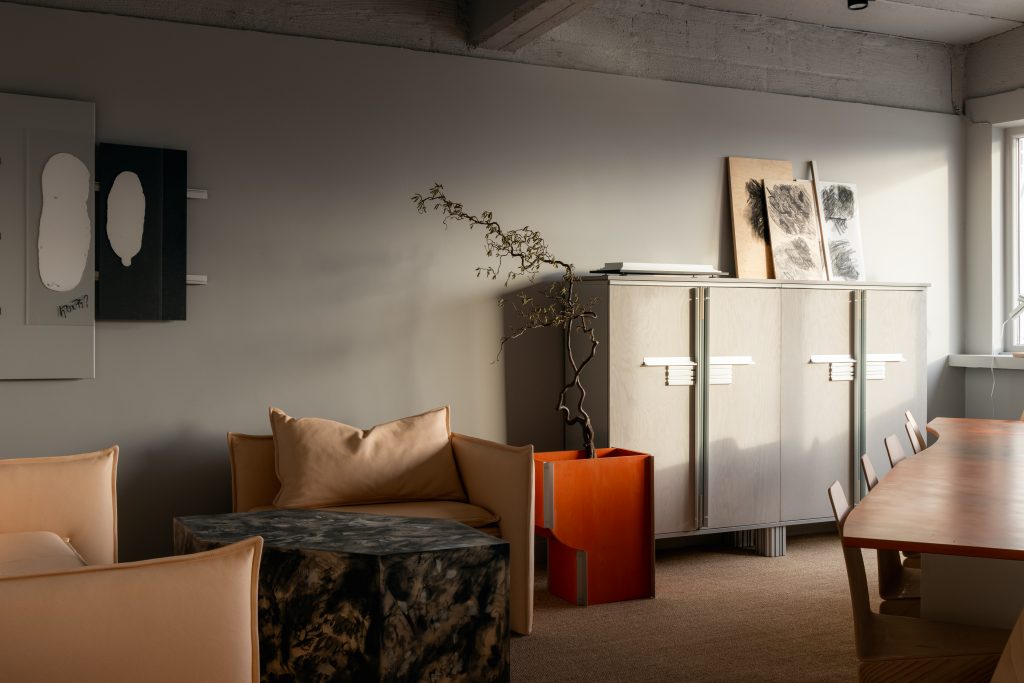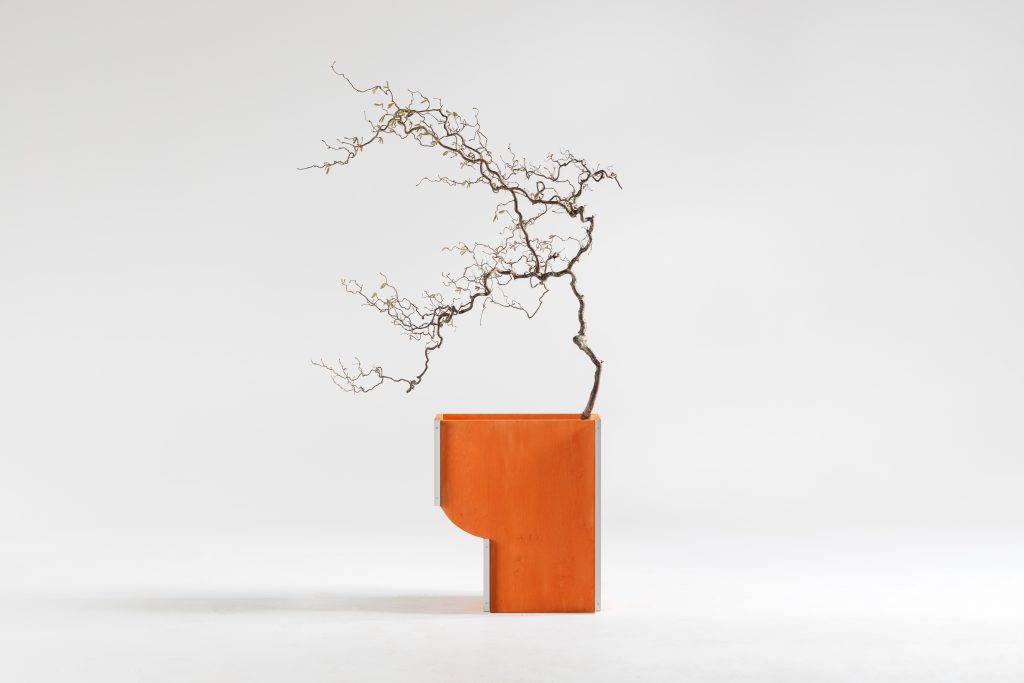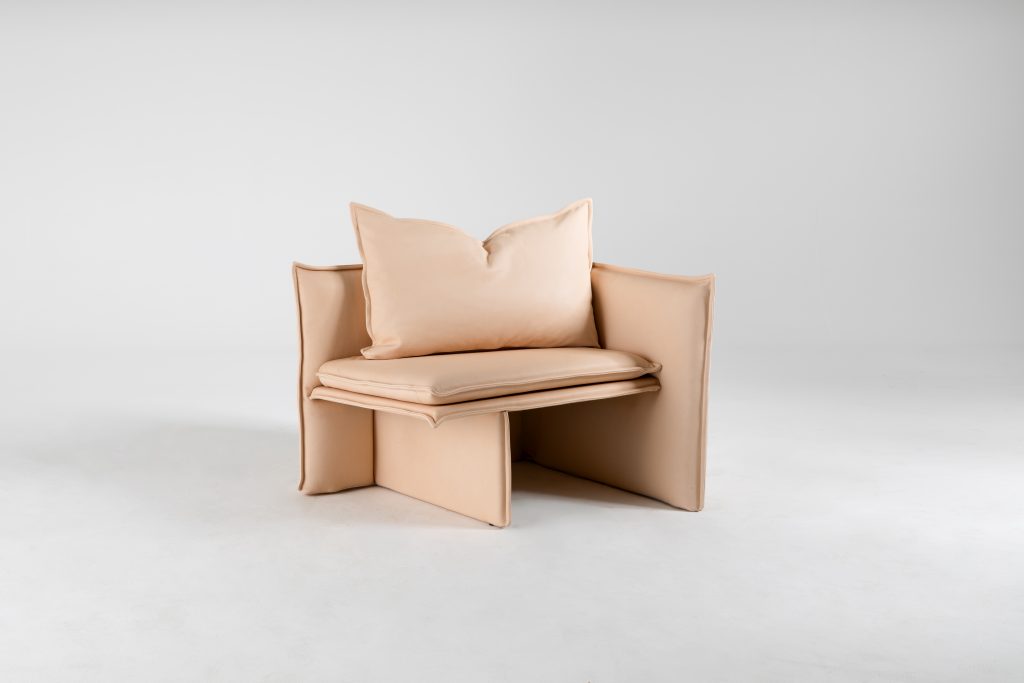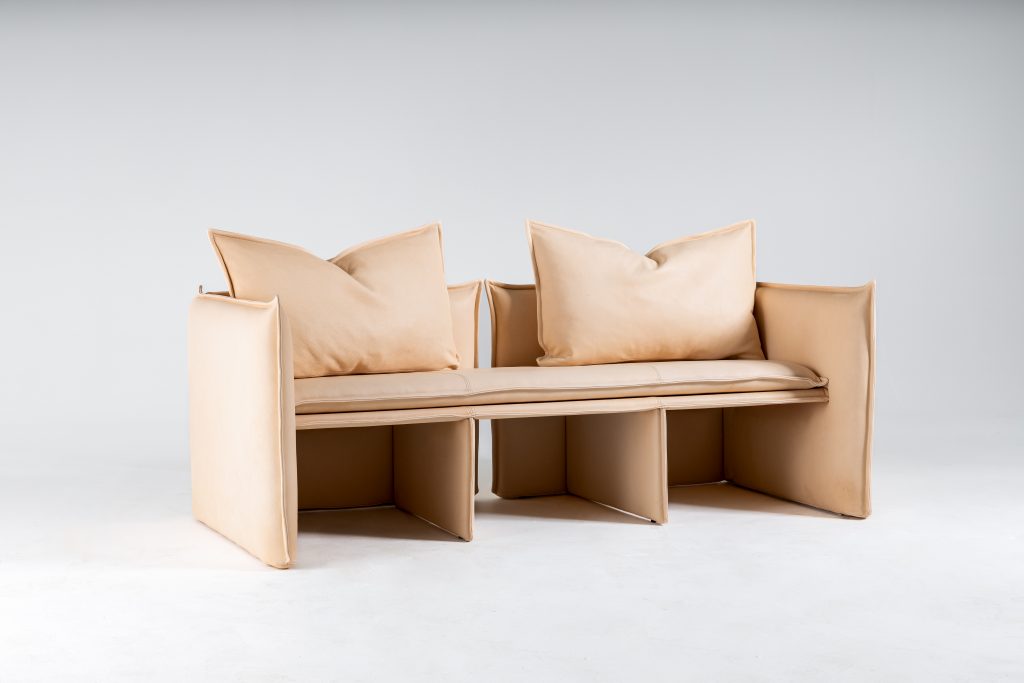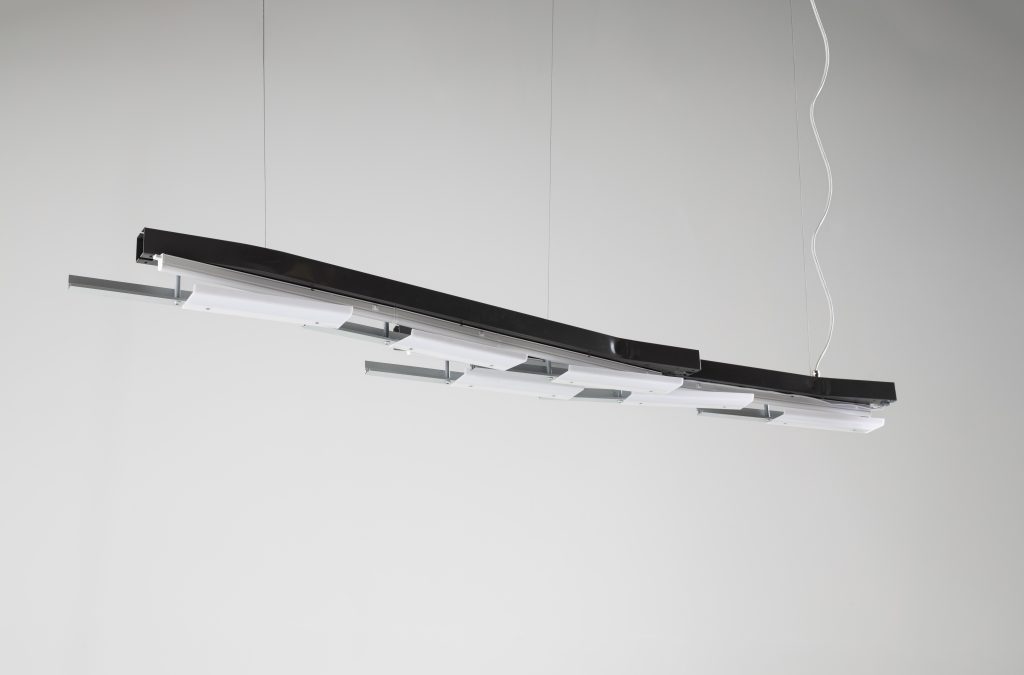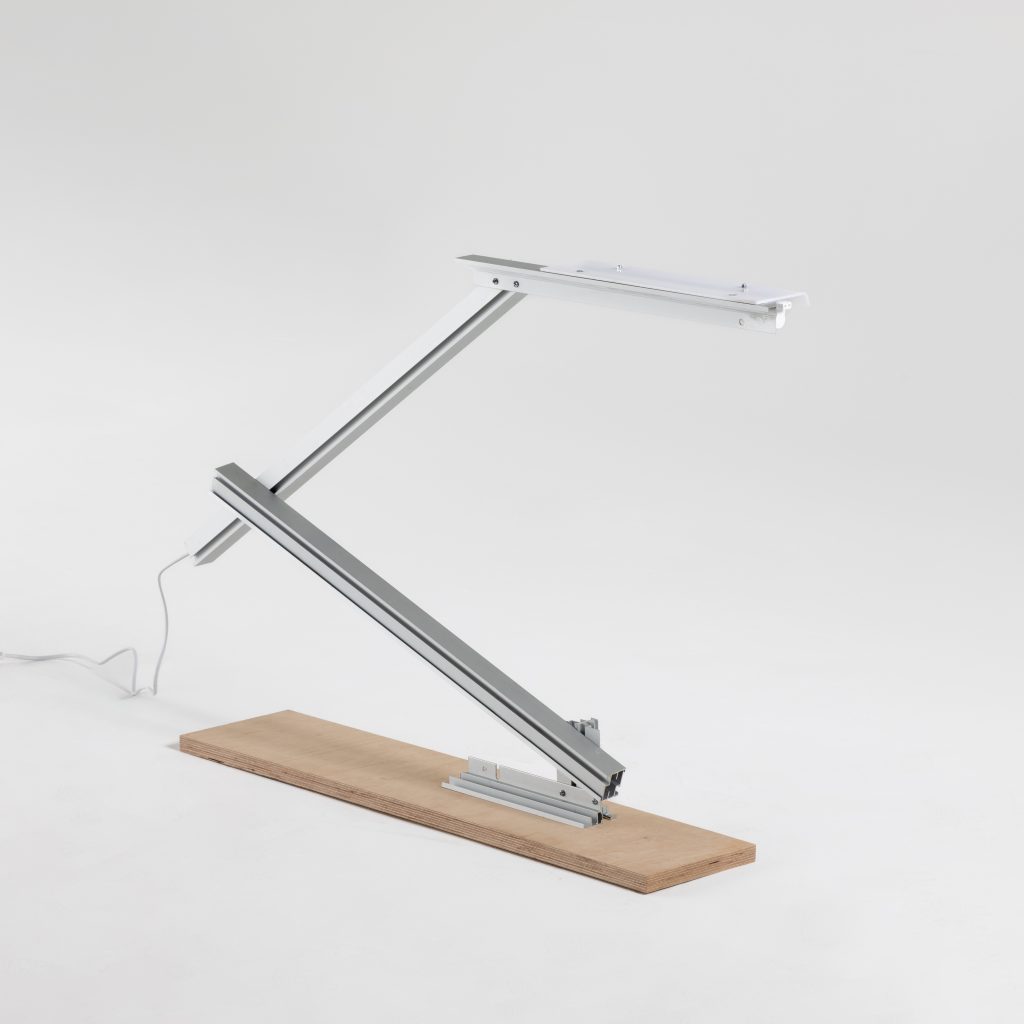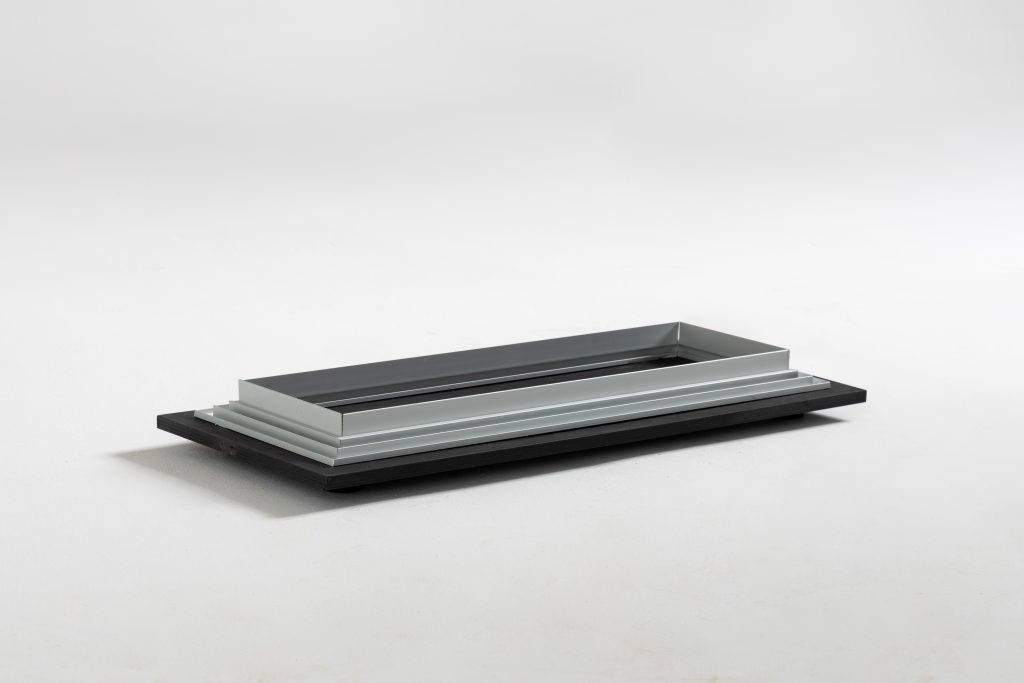-
The Executive
The Executive
New office furniture assembled from a library of possibilities
About the series
The Executive is a furniture series where Jenny Nordberg together with Soeco explore furniture reuse, specifically the reappropriation of second-hand furniture into new designs. Jenny Nordberg’s self-initiated goal was to utilise the least desirable parts, objects and details, from a stock of recyclable pre-owned office furniture. Nordberg has deliberately chosen not to adhere to the most conspicuous functions of furniture parts nor to follow the most obvious design paths that they suggest. Alternatively, she has treated the objects as a catalogue of parts, disassociating them entirely from their original purpose and viewing them instead as uncorrupted raw material; a library of possibilities. In this way, the material is viewed with optimism, opportunity, and flexibility. It loses its past association with ‘waste’ and redundancy. By shifting a simple perception, eradicating expectation and bias (both hers and ours) Nordberg alters the context of these unwanted elements and creates a positive and dynamic environment within which to create and build.
For instance, sound absorbers that were once unsellable have been reimagined as comfortable sofas. An oddly shaped table top has been dissected and reassembled into a new sofa table. Damaged supports taken from adjustable desks are combined with whiteboard pen holders and transformed into lamps. Jalousie cabinets have been turned into sculptural shelving, and so on. Each new object, imagined for use in the ‘Executives’ office, is a novel hybrid; a collage of latent potential pieced together by Nordberg’s unprejudiced viewpoint.
The Executive collection has been produced in close collaboration with skilled craftsmen at Seco’s workshops in Lund. Soeco which is a part of Yllw, which is part of the NO GA Group, shows in collaboration with Jenny Nordberg how they also can work as a producer and thereby taking the recycling industry to a new level.Pieces from The Executive will be available to purchase on a made-to-order basis.
About Soeco
Soeco, located in Dalby outside Lund, is an innovative player in sustainable office furniture. Soeco specialise in giving new life to old furniture. This makes them one of the leading suppliers of sustainable solutions for private and public environment projects such as offices, hotels, and restaurants. Soeco combines high-quality refurbished furniture with new design elements to create custom interior solutions. Their factory renovates and adapts furniture through reupholstery, finishing, carpentry and manufactures entirely new products. Because of this, the company not only contributes to a more sustainable work environment but is also able to create functional and creative interiors that are bespoke to each customer’s needs and values. Soeco’s idea and business model is fundamentally circular instead of linear and the company has the capacity to work both conceptually and scalable. This opportunity for large-scale is seen as positive as more circularity contributes to less emissions. Soeco also works actively to make it easier for both architects, designers and end customers to choose recycling.
About Jenny Nordberg
Jenny Nordberg is an industrial designer MFA from southern Sweden who works in a particularly exploratory and interdisciplinary way. She seeks to expand the commonly-held contemporary notions of design and the designer. Whether working on an experimental, conceptual or commercial project, her practice is always driven by a search for alternatives and counter-strategies to irresponsible mass production. Stylistically, Nordberg’s work is characterised by a brutal minimalism. Chance and opportunity are other recurring elements. Navigating between art and design, her research and studio work focuses on how we produce and consume today, how we have done so historically, and how this might be done differently in the future. By exploring questions such as these, Nordberg seeks to transform preconditions of design and encourage a more engaged and enlightened position for designer and consumer alike.Objects in the The Executive series
All the objects in the series have been created for Seco’s new CEO, Mattias Andersson’s office. The series also marks a new era for Soeco, which, at Mattias’ initiative, is now also acting as a producer by refining hard-to-sell furniture and parts into new furniture and objects. Everything is for sale, and several of the pieces will be mass-produced.
Seating Furniture
Made from sound absorbing partition walls that comes in various designs and dimensions. The challenge here was to create furniture with minimal alterations to the partition walls, as they are difficult to cut. Only three cuts have been made in the sofa and one in the armchair. Otherwise, the dimensions of the different partition walls have dictated the shape of the sofa, giving it character with its protruding armrests. The upholstery is made of natural leather, chosen deliberately because it ages beautifully with use. Other upholstery options are available.
Materials:
Reused partition walls in mdf, foam, and textile
Reused down-filled inner cushions
Padding
Untreated leather with natural imperfections
Reused adjustable feetCoffee Table
A coffee table created using a tabletop with an unpopular shape as raw material. Angles of 45 and 90 degrees were chosen to simplify production. The surface has been painted and treated with charcoal and lacquer. A monochrome color scheme is also available.
Materials:
Reused mdf tabletop with high-pressure laminate
Paint, charcoal and lacquerConference Table
A large conference table that also functions as a dining or writing table. Several tabletops with varying defects and thicknesses have been joined together. Filler and sanding marks serve as decorative elements on the tabletop, which has been finished with a semi-transparent coloured lacquer. Available in different sizes and also with a monochrome color scheme.
Materials:
Reused tabletops
Filler and lacquer paintCabinet
Jalousie cabinets are difficult to sell on the second-hand market – perhaps due to their size and bulkiness, or because the jalousie mechanism tends to become stiff over time. They are easy to acquire but hard to dispose of. Can they be renewed to become desirable again? These cabinets have been repainted, and the roll-fronts have been replaced with doors made from leftover plywood from the carpentry shop. New handles and legs, sourced from old aluminum parts, have been installed.
Materials:
Reused jalousie cabinets
Leftover pine plywood pieces
Reused aluminum profiles from whiteboards and partition walls
Lacquer paint
Floor lacquer paintWall mounted piece
During the creation of this series, a pile of leftover materials accumulated – someone accidentally wrote directly on a discarded plastic sheet, a lone door with an unusual shape, a black mdf board adorned with yellow text, and so on. Some of these pieces live on as spontaneous assemblages.
Materials:
Mdf offcuts
Reused cabinet door
Plastic offcut
Reused aluminum profile from a whiteboard
Mounting adhesiveCeiling Lamp
One of the most challenging furniture components to repurpose is the leftover curved beams from the frames of height-adjustable desks. However, their shape has potential – especially when combined. This became the foundation for a 2.5-meter-wide metal composition. Together with six whiteboard pen holders repurposed as scattered lampshades and electrical fittings, they form a ceiling lamp.
Materials:
Reused beams from height-adjustable desks
Reused aluminum profiles and pen holders from a whiteboard
Electrical fittingsVases
Materials:
Leftover pine plywood pieces
Reused aluminum profilesTable Lamp
Materials:
Reused aluminum profiles and pen holders from a whiteboard
Leftover pine plywood pieceTray
Materials:
Reused aluminum profiles from a whiteboard
Leftover pine plywood piece
Reused adjustable feet
-


